6 Really Cool Ways We Use Solar That You Just Have To See!
Using the Sun's energy, whether it's solar heat radiation or the tiny molecules of energy called photons which are literally molecules of light, has come to be known generally as “solar power”. There are two types of solar energy, “solar thermal”, and “solar electric”. Solar thermal uses the Sun's heat radiation to concentrate heat for heating or to produce electricity. Solar electric, technically “photovoltaics”, uses photons of light from the Sun to generate direct current, or DC, electricity.
We've all seen these two versions of solar energy usage on homes and businesses in the form of “solar panels”. Solar panels come in both forms of solar energy collection, thermal and electric. Solar thermal is used on the roof of a home to heat water, which then provides hot water to the home. Solar electric (PV) takes the form of solar electric panels, or more generally just solar panels, attached to a roof by a mounting system. These are the most readily recognizable uses of solar energy. But technology is certainly not limited to use of solar energy on our homes and businesses. Here, in no particular order and voted on by no one, we'll look at six really cool ways solar energy is developed and used that you may not be familiar with and you just have to see!
Solar Space Station
Space exploration is cool. Space exploration powered by solar energy is really cool! Solar power has been used to power spacecraft since nearly the beginning of the Space Age. The use of solar panels to power spacecraft is limited those spacecraft that operate within the inner solar system, where the sun's rays are strong. Solar panels, which use gallium arsenide and, more recently, a gallium arsenide and silicon hybrid technology called "multi-junction photovoltaic cells". Multi-junction photovoltaic cells capture the largest spectrum of light possible and are the leading edge of solar PV technology, exceeding 40% efficiency under ideal conditions. Some spacecraft that have been powered by solar energy are Juno (Jupiter), Magellan (Venus), Mars Observer and Mars Global Surveyor (Mars), Rosetta (Comet 67P/Churyumov–Gerasimenko). Earth-orbiting solar-powered spacecraft include the Hubble Space Telescope, but the reigning colossus of really cool solar-powered spacecraft is hands-down the International Space Station!
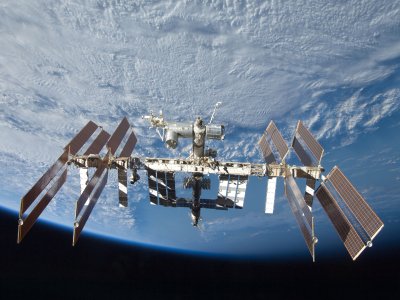
The International Space Station (ISS) operates in low Earth orbit and is powered completely by solar power. Its first component launched into orbit in 1998, and consists of pressurized modules, external trusses, solar arrays and other components built by a partnership of nations including the United States, Canada, Japan, Russia, Italy, Europe, and others. The ISS is a series of modules launched into space by Russian Proton and Soyuz rockets and American space shuttles.
The ISS serves as a micro-gravity and space environment research laboratory in which crew members conduct experiments in biology, human biology, physics, astronomy, meteorology and other fields. All of these systems are powered by double-sided solar photovoltaic arrays which provide electrical power for the ISS.
The Russian segment of the station uses 28 volt DC from four rotating solar arrays mounted on Zarya and Zvezda. The USOS uses 130–180 V DC from the USOS PV array. The ROS uses low voltage. The two station segments share power with converters.
The solar arrays on ISS normally track the sun to maximize power generation. Each array is about 375 m² (450 yd²) in area and 58 meters (63 yd) long. In the complete configuration, the solar arrays track the sun by rotating the solar arrays as needed to maximize exposure to the Sun and to minimize drag, due to the station's low orbit, as it moves through Earth's shadow.
Rechargeable nickel-hydrogen batteries (NiH2) are used to store energy generated while the solar panels are exposed to the Sun. Then as the ISS is eclipsed by the Earth, this stored energy can then be used to power the station for the 35 minutes it is in Earth's shadow during each 90-minute orbit
But enough of that technical stuff. What really matters is the really cool way spacecraft, like the ISS, use solar energy to discover the final frontier!
Solar Cars
Solar cars are vehicles which use solar photovoltaic cells on the surface of the car to produce electrial current from photons of sunlight. This current is then used to charge batteries in the car. The batteries provide power to the electric motors which then turn the wheels of the car. Solar cars are generally built for racing and the limitations of using on-board solar energy to power passenger vehicles are currently insufficient in providing a reliable source of vehicular transportation.
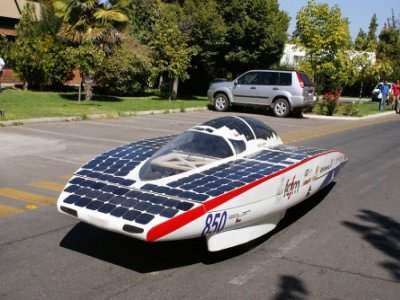
However, there have been great strides in electric car technology, led by the likes of Elon Musk of Tesla Motors notoriety and cars like the Toyota Prius and Nissan Leaf. These cars use a cord that plugs into a power source in order to charge the batteries. All it takes to transform these EV car models into solar cars is to install a standalone solar power system that will store the sun's energy in a battery bank which can then be transferred to the car. This usually will take the form of a solar carport but can also be a pole- or roof-mounted solar array.
Solar-powered cars are a developing technology. But can it replace traditional fossil-fuel-powered cars? For an answer to this important question, we turn to Tom Murphy, an associate professor of physics at the University of California, San Diego: “...solar powered cars fall solidly on the reality side of the reality-fantasy continuum. That said, pure solar transport (on board generation) will suffer serious limitations,” says Murphy. “More reliable transport comes with nuances that may be irritating to the purist. You can apply a bumper sticker that says SOLAR POWERED CAR, but in most cases, you will need to put an asterisk at the end with a lengthy footnote to explain exactly how you have realized that goal.”
For an extended, by-the-numbers look at solar cars, check out Tom's article entitled A Solar Powered Car? over on his blog Do the Math . The article is 4 years old but does a good job of illustrating the degree of practicality of solar cars. This writer reckons the numbers have gotten better in those intervening four years. Perhaps Mr. Murphy will stop by and lay some contemporary wisdom down on us by way of an update to his article.
Using light from the Sun is a really cool way to power a spin around your neck of the woods!
Solar Bricks
Solar bricks are a really cool way to highlight the driveway or walkways around a home or business. Solar bricks come in many styles, sizes, and colors and can be laid right into the masonry of a brick sidewalk, driveway, and patio or to accent the perimeter of a brick wall or to add ambient light to outdoor landscaping features.
Most solar bricks allow sunlight to penetrate during the day to charge the batteries which, in turn, powers led lights inside the brick. When the sun sets and the dark of night advances, these bricks begin to glow, lighting walkways, driveways, and patios and providing a way to navigate the dark of night. Some even have control systems that allow you to change their color or to turn them off and on as needed.
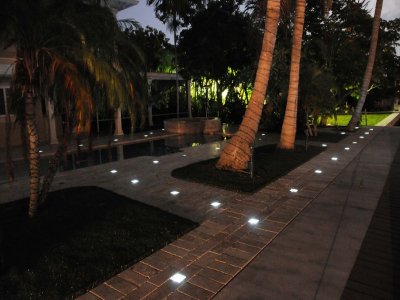
Solar bricks are easy to install and are designed to replace regular brick and paving stones and are laid using mortar just as regular bricks are laid and cemented together. Most quality solar bricks are able to collect a full charge, even on moderately cloudy days. Dark, overcast days may affect the lighting output of solar bricks but exposure to natural light all day should provide enough charge to sufficiently light them at night. And besides, they're a lot cheaper to install than traditionally wired lighted bricks!
The cost of solar bricks varies depending on the kind of brick that you want. Higher quality, more sturdily built lighted bricks will of course cost more. Some decorative models will also cost more but there are many models and brands of solar bricks that are very reasonably priced. But another thing that's really cool about solar-powered bricks is that, once installed, they cost nothing more to operate!
So, that's two really cool things that make solar bricks a really cool use of solar energy: it's a brick that lights up at night, and it costs nothing to operate once installed. Shall I say it one more time? Solar bricks are really cool!
Solar Airplanes
No, we'll probably never see a solar-powered commercial passenger airliner. However the day may come when smaller airplanes, probably motorized gliders, are powered completely by the Sun. Solar airplanes, also known as “electric aircraft”, use thin-film solar cells on the tops of their wings which provide power to the propellers via a motorized shaft. Aerodynamics and physics do the rest.
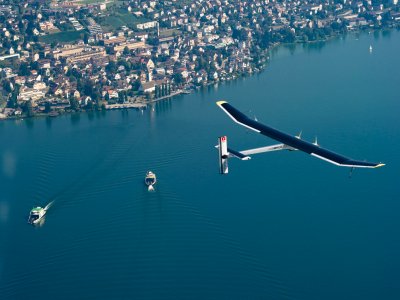
Solar airplanes today are mostly experimental demonstrators and include both manned and unmanned aerial vehicles. Beginning early in 2015 Solar Impulse , a manned airplane powered by the Sun, began a 5-month circumnavigation of the Earth, the first attempt of it's kind. In the interest of space, we'll highlight this particular solar aircraft to help describe this really cool use of solar energy.
Solar Impulse , a Swiss long-range experimental solar-powered aircraft project, is a privately funded project led by Swiss engineer and businessman André Borschberg and Swiss psychiatrist and aeronaut Bertrand Piccard, who gained previous notoriety co-piloting Breitling Orbiter 3, the first balloon to circumnavigate the world on a non-stop mission. The two men are currently attempting to achieve the first circumnavigation of the Earth by a piloted fixed-wing aircraft using only solar power.
Powered by photovoltaic cells and capable of taking off under its own power, the single-seat monoplane prototype aircraft Solar Impulse 1 was designed to remain airborne up to 36 hours. Solar Impulse 2 , on the other hand, is a new and improved craft carrying more PV cells and more powerful motors, among other improvements, and has a longer range and time in flight.
According to Wikipedia, Piccard and Borschberg began their attempt to circumnavigate the globe aboard Solar Impulse 2 on March 9, 2015. Departing from Abu Dhabi, the aircraft was scheduled to return to Abu Dhabi in August 2015, upon the completion of its multi-stage journey. By June 1, 2015, the plane had flown across Asia. Leaving from Japan on July 3, 2015, the plane completed the longest leg of its journey, after landing in Hawaii. During that leg, however, the aircraft's batteries experienced thermal damage that is expected to take months to repair. The Solar Impulse team will attempt to resume their circumnavigation of the globe in April 2016.
For more information on solar airplanes, check out this Wikipedia article .
I don't know about you but flying around the world is a really cool way to use solar energy! And when it comes to Solar Impulse, I say, “Are we there yet?” Stay tuned at SolarImpulse.com!
Solar Traffic Control and Monitoring
By now we've all seen them on the side of the road, perhaps at each end of a school zone or atop a portable speed detection radar unit. Solar traffic control lights and monitoring equipment systems are devices which are powered by solar panels and batteries. Positioned at road intersections, pedestrian crossings, and other locations to control and monitor the flow of traffic, these systems use lights in the standard colors red, amber, and green. Most solar traffic control systems use a battery bank to power the unit during nighttime hours.
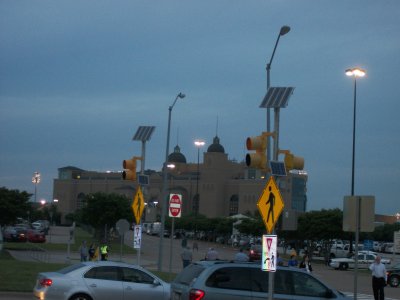
Most solar traffic lights use LED lighting technology as they are more reliable and are energy efficient and have a long life span, among other advantages. Solar traffic lights consist of battery enclosures which house the batteries, control panel circuitry, signage, lights, and a solar panel(s) all mounted on a pole or trailer. Solar traffic lighting systems also include a charge controller to control the charging and discharging of the battery and a countdown timer which displays the amount of time left before the battery discharges fully.
Solar traffic lights can also be used during periods following natural disasters such as hurricanes and tornadoes, when the existing street lights may not function due to power outages. Often in times like these traffic becomes uncontrolled and chaotic and traffic congestion in the disaster area ensues. There are also portable solar-powered street lights that are designed to be carried and operated by police and relief workers wherever traffic needs to be regulated.
There are obvious advantages to the use of solar traffic lighting and control systems: they are self-contained and do not require external power sources or fuel to operate; they are fast and easy to set up and operate; and they are autonomous, requiring very little if any maintenance as they have no moving parts that can break down and otherwise fail. In most cases the entire system consists of some sort of lighting configuration that conveys a universal signal or textual message, a charge controller, a battery bank, a solar panel(s), and mounted to a pole or trailer, depending on whether it's a permanent fixture or a portable unit.
Any way you look at it, using solar to power portable traffic control and lighting systems in the event of a natural disaster or to control the flow of traffic through a school or highway construction zone is a really cool way to use solar energy!
Solar Boat
The one thing I always notice no matter what kind of motorized boat I'm aboard is the noxious fumes produced by the burning in the motor of fossil fuels like gasoline or diesel. But for some boats and boating applications, there is a viable alternative: solar-powered boats!
You need three things to move a boat: energy, propulsion, and a rudder. In the olden days, the energy to move a boat was provided by the wind. The propusive device took the form of sails. Then petroleum and cumbustion motors were added to the methods for propelling a boat through the water. But now we're finding that solar energy can be used to power an electric motor which then turns the boats propeller. Solar boat design has to take into account the efficiency of current solar technology when figuring out how much area is needed to collect enough solar energy. Most current solar boat applications are limited to powering boats for short trips. But there are experimental applications that take solar boating to a whole new level.
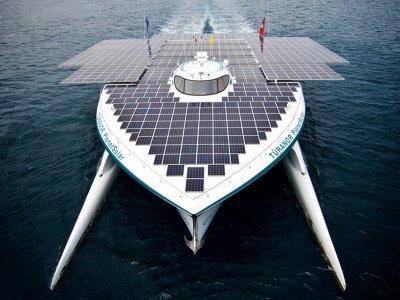
Meet PlanetSolar, a unique sailing vessel that uses solar power to power it's electrical and propulsion systems. PlanetSolar is the largest solar-powered boat in the world. It launched on 31 March 2010 and after over two years it became the first solar electric vehicle ever to circumnavigate the globe. This solar boat is covered by nearly 6000 square feet of solar panels producing around 93 kW of electrical power. The current generated by the solar array is used to power one of the two electric motors in each hull. There are 8.5 tons of lithium-ion batteries in the ship's two hulls that act as ballast and which store the energy produced by the solar array. Combined with the hydrodynamics and aerodynamics of the boat's shape, PlanetSolar can reach speeds of up to 14 knots. The hull was model tested in wind tunnels and was tank tested to determine its hydrodynamics and aerodynamics. It is currently being used as a floating marine research laboratory by Geneva University.
But not all solar boats are expected to get their crews all the way around the world. A more practical application of solar powered boating includes the use of solar-powered water shuttles. The Serpentine Solar Shuttle, operating on Lake Serpentine in the UK, can carry 42 passengers. The Constance, which can carry up to 60 passengers, is another solar shuttle that operates on Lake Constance, on the Germany, Austria and Switzerland border. The Hamburg Solar Shuttle carries up to 120 passengers and operates in Hamburg, Germany.
Whether it's solar-powered sailing around the world or taking a water taxi across a European lake, using solar power to propel a boat is a really cool thing to do!
And there you have it, five really cool ways we use solar! But solar energy is in no way limited to these five examples. There are many more really cool way that we use solar and we'd like to get you involved. In the comments below, tell us another example of a really cool was to use solar energy!
Recent Posts
-
Avoiding Hidden Dangers – Maintain Your Solar Panels Properly
Although solar energy is a sustainable power source, it doesn't mean your equipment will last f …13th Apr 2017 -
Beer, Courtesy Of The Sun...
Today is National Beer Day ( #NationalBeerDay ) and for many breweries across the world light …7th Apr 2017 -
Can Going Solar Help Your Business Succeed?
Businesses have faced many challenges in the years since the Great Recession, a stormy time of econo …8th Mar 2017
